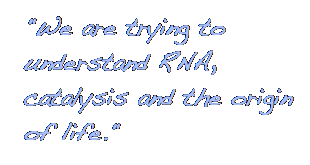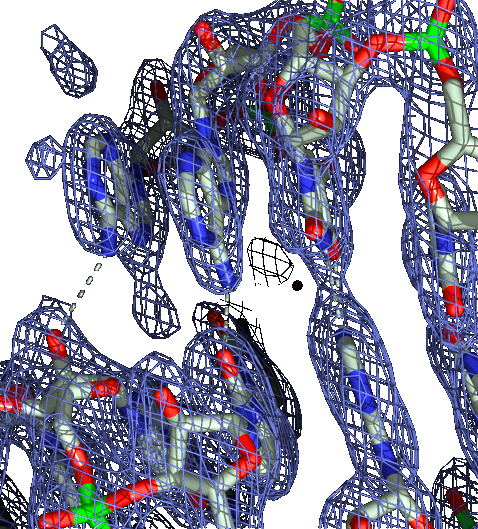Recent Highlights
Research Overview
Publications
Atomic Coordinates
Research Projects:
Lab members and their pages
Software
Links of Interest
Back to Scott
Lab Home Page
|
|
Macromolecular X-ray crystallography
is a technique that permits us to directly observe a macromolecule
at near-atomic resolution. Unlike NMR, it can provide a completely
objective image of a molecule (the electron density map, an example
of which is depicted as a blue mesh in the figure above). An
electron density map is the Fourier transform of the diffraction
pattern, but in order to calculate an electron density map, one
must know the phase of each one of the diffraction spots. These
unfortunately do not survive the initial measurement process, and
therefore must be re-established using indirect approaches such as
multiple isomorphous replacement or multiple anomalous dispersion
techniques. The density must then be interpreted, the process of
which is known as model building (and this process is not immune
from bias and error). The process is straightforward though
somewhat involved. Feel free to give it a try using some actual
diffraction data we collected in our
on-line tutorial.
Three recent projects are summarized on separate web pages:
|






